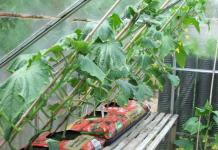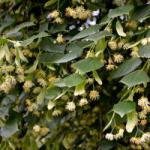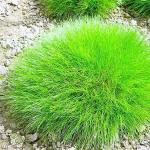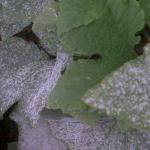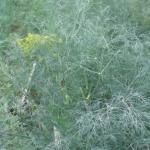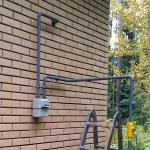Spring is a favorable time for arranging a plot with raspberries. Regardless of the variety, it must be protected from diseases and pests, cut, fed, watered. Only with good care, raspberries please with a plentiful and tasty harvest.
Bushes are processed at the beginning of the growing season and during budding (5-7 days before flowering).
During the flowering of raspberries, any preventive or therapeutic measures should be excluded. The processing of bushes during this period leads to the death of pollinating insects and, as a result, to a deterioration in the yield.
What to process
Processing is carried out both with chemical preparations (urea, copper sulfate, dolomite flour, Bordeaux liquid), and folk remedies (mustard, soda, boiling water, infusions of herbs and flowers).
To strengthen the plants, urea treatment is performed in early spring. 15-20 grams are taken per square meter. Urea saturates the bushes with nitrogen and makes them less susceptible to disease.
Processing raspberries with copper sulfate avoids the appearance of fungal diseases (gray rot, anthracnose). Raspberry stalks and the soil around the bushes are processed. For spraying, 50 grams of vitriol is taken per 5 liters of water.
During the growing season and during the active growth of the plant, treatment with copper sulphate cannot be performed. It accumulates in berries and stems.
In the fight against anthracnose, rust and powdery mildew, the treatment of bushes with a 1% solution of Bordeaux mixture or ferrous sulfate, Topaz, Nitrofen helps.
The main reasons for the development of infections are high humidity and high acidity of the soil. Reducing watering reduces moisture. Acidity can be reduced with wood ash, slaked lime, dolomite flour. 150 grams are taken per square meter.
Mustard protects raspberries from weevil larvae.
For spraying, 20 grams of dry mustard is taken per 10 liters of water, everything is mixed and infused for 12 hours. Spraying of bushes is carried out in several visits.
Instead of mustard, you can take baking soda, 2 tablespoons should be diluted in 10 liters of water.
Processing the bushes and the root circle with boiling water allows you to get rid of most pests. The procedure is performed after the snow melts and the soil warms up.
With a small area of damage, raspberry beetle larvae can be harvested by hand. Before flowering, it is treated with an infusion of bitter wormwood and marigolds. When using Agravertin and Agravertin, the treatment is performed twice.
During budding, raspberries can be sprayed with tansy infusion.
For infusion, 350 grams of dry grass or a kilogram of freshly harvested raw materials, 5 liters of water are taken. Tansy is infused for a day, then boiled for half an hour, filtered and diluted with the same amount of water.
Mulching with pine needles protects against weevil and gray rot.
The main pests and diseases of raspberries with photos, descriptions and control measures
Pests
The main pests of raspberries are:
- stem gall,
- raspberry beetle,
- stem fly,
- weevil,
- spider mite,
- kidney moth,
- raspberry nutcracker,
- raspberry glass.

The presence of swellings on the stems and shoots of raspberries indicates that the plant is affected by stem gall midge. Such shoots are cut and burned.
For prevention in early spring, the soil is loosened to a depth of 5-10 centimeters and sprayed with karbofos or Fufanon.
During the appearance of buds, re-treatment with Fufanon or Actellik is performed.

Aphids feed on plant sap and accumulate on the lower part of the foliage. To destroy the pest during bud break, karbofos or Actellik is used.

For the prevention of stem flies, mulching the soil around the bushes is used. Mulch makes it difficult for insects to get out of the ground. The first treatment is carried out after the snow melts, karbofos is used. In early May (before flowering), Fitoverm, Aktellik or Agravertin are processed.

Raspberry nutcracker attacks raspberry stems. The larvae feed on stem tissue and cause tissue cracking and swelling. Blisters in length reach 10 centimeters. Diseased plants are removed from the site. For the prevention of healthy bushes, treatment with karbofos is carried out.

When raspberry bushes are affected by the weevil, the plants are treated with karbofos, metaphos or Actellik. Processing is done a week before flowering.

To combat the kidney moth in early spring (before the buds swell), the bushes are treated with Bordeaux liquid, Confidor, Spark, Decis. When leaves appear, a 10% solution of karbofos is used.

The raspberry beetle damages the leaves, buds and berries of the plant. Berries shrink and quickly deteriorate.
To protect against the raspberry beetle, the bushes and the ground around (immediately after the snow melts, trimming and tying the bushes) are sprayed with a 10% solution of karbofos, Nitrafen, Decis, Confidor, Iskra and covered with mulch.

When a raspberry glass case appears, the damaged stems are cut and burned, the caterpillars damage the stems, roots and lead to the weakening and death of the bushes.

Spider mites can be identified by white punctures on the surface of raspberry leaves. With a strong defeat, the plants begin to wither and die.
In the fight against spider mites, karbofos, phosphamide, metaphos, colloidal sulfur, Cidial are used. Spraying is done in the evening.
Diseases
Raspberry is amazed
- anthracnose,
- rust,
- white and purple spotting,
- powdery mildew,
- vercillo wilt,
- gray rot,
- streak,
- mosaic,
- mycoplasma disease (growth),
- curly,
- bactericidal root cancer,
- root rot.

Anthracnose (leaf curling) occurs when there is a lack of boron or potassium in the soil. With a lack of potassium, the leaves are wrapped inside. You can correct the situation with the help of ash. The lack of boron can be compensated by adding a solution of boric acid.
From gray rot and anthracnose, raspberries are treated with Nitrafen solution in early spring. When buds open, Bordeaux liquid is sprayed. Fitosporin can be used at any time.
With the appearance of mottling, stains, spotting on the leaves (viral diseases), they must be removed immediately. Pruning old shoots, thinning and feeding plants avoids these diseases. 
To avoid verticillium wilt when planting, the roots should be dipped for 10 minutes in a weak solution of potassium permanganate. When leaf spot appears, Bordeaux liquid is used.

Raspberry chlorosis

Pests (mites, aphids, nematodes) penetrate the stems through cuts, breaks. These insects are carriers of viral diseases (chlorosis, jaundice). The leaves turn yellow, the stems are depleted, the berries become smaller and dry quickly.
At the first sign of chlorosis, plants need to be dug up and burned, healthy bushes and the soil around are treated with protective preparations.
Mycoplasma disease leads to the formation of a large number of infertile thin shoots from 30-50 centimeters long (about 200 pieces per bush). At the first manifestations of the disease, the bush is dug up and removed from the site.
Leads to yellowing of foliage. When transplanting or planting bushes, you need to pay attention to the roots. If there is swelling, they are removed, and the cuts are treated with a 1% solution of copper sulphate. 

When raspberry curl appears, the leaves become very small, become wrinkled, hard. The underside of the leaves turns brown. Berries become sour, deformed and dry. The plant dies within 3 years. Sick bushes are immediately removed and sent to the fire.
Spring treatment of raspberries from pests / Stem raspberry fly / Spraying raspberries: video
In addition to processing raspberries from pests and diseases, care includes:
- pruning,
- top dressing,
- tying up,
- watering and weeding.
To prevent raspberry bushes from getting sick, you need roots and stems from mechanical damage. Shrubs in one place can grow no more than 7 years. They can be planted on the former site after 4 years.
Landing should be done in fertilized soil. Seedlings should be healthy, strong, with a well-developed, strong root system, without any damage.

Treatment with copper-containing preparations (1% Bordeaux liquid, Oksihom, Abiga-Peak, Hom, Copper oxychloride) saves raspberries from infections. In rainy weather, spraying should be repeated after 1.5-2 weeks.
To combat diseases of raspberry bushes, it is necessary to provide plants with a high level of agricultural technology (the right place for planting, top dressing, timely watering, loosening, weeding, tying and mulching).
If the raspberries dry out, then there are reasons for this: lack of nitrogen, lack of moisture and thickening of the planting. Eliminating problems can improve the yield several times over.

Pruning is done from the second year of plant life.
One of the more important steps in caring for raspberries is pruning.
First of all, shoots are cut off on which fruits are not expected (frozen, damaged and young), they are cut off at the root. If the shoot is partially damaged, it is cut to a healthy place.
Regardless of the planting, the bushes should not be thickened. With a bush form, 8-12 stems should grow, with a ribbon no more than 25 stems.
The second pruning is done when the raspberries grow.
The tops of raspberries are cut to 12-15 centimeters (to the first bud), this stimulates the development of the plant and lateral buds. The height of the stem should not exceed 1.5 meters.

The most necessary useful substances for raspberries are potassium, phosphorus, nitrogen and organic matter.
- Potassium improves the yield and winter hardiness of plants.
- Phosphorus strengthens shoots.
- Nitrogen accelerates plant growth. Any raspberry variety gives a good harvest on soil rich in organic matter.
To increase the yield, spring top dressing is carried out in several stages.
Any kind of raspberry dressing is done after watering and loosening the soil.
For the first top dressing, after the snow melts (before loosening the soil), urea or saltpeter is used. Granular fertilizer is applied under the bush immediately after watering. 15 grams of saltpeter or 20 grams of urea are taken per square meter. To enhance the effect, a glass of wood ash is scattered under the bush.
After loosening the land, rotted manure, peat or compost is distributed on the site. The organics will serve as mulch.
In May, raspberries need to be fed with mullein. The mullein is filled with water in a ratio of one to one and infused for a week. The resulting infusion is diluted with cool water (2 liters per 10 liters of water), poured under the bushes.
When laying the ovary, top dressing is carried out with superphosphate. After this procedure, the bushes become strong, resistant to diseases, the yield increases.
During flowering, 1 glass of superphosphate, a glass of ash and 100 grams of carbamide are introduced.
The mixture is diluted in a bucket of water and spilled under the bushes.
Feeding raspberries with chicken manure increases the yield and strengthens the plants. Litter is diluted in water in a ratio of one to five and infused for 5 days. The finished infusion is diluted one to twenty and used for its intended purpose.
Raspberries. The fight for the harvest begins in the spring: video
Proper processing of raspberries in the spring and good care allows you to get a bountiful harvest every year.
The raspberry stem fly poses a threat to young shoots, on which many new berries could subsequently appear. Sometimes, under special conditions, the number of this pest increases so much that crop losses reach 50%. The first flight of insects occurs at the stage of the appearance of new raspberry shoots - this happens around mid-May.
Almost immediately, females begin to lay eggs one at a time in leaf axils located at the top of the shoots. After some time, worm-larvae hatch from the eggs, which immediately drill into the stalk and begin to move down it, making a bizarre spiral-ring tunnel.
As a result of their activity, the stem tops begin to noticeably wither, fall off and eventually die. When the raspberry begins to bloom, the larvae leave the stem and go into the soil layer for wintering.
If wilting of the tops is noticed among the raspberry bushes, it is quite possible that the stem fly has visited the garden. The adult is similar to a small gray winged insect with transparent membranous wings. Its length usually does not exceed 5 mm.
After making sure that this insect is present on the site, you can carefully break one of the damaged shoots - inside you can see a blue ring, in which white small larvae will be visible.
The first rule in the fight against a pest of this type is a regular careful examination of the raspberries for stem fly infestation. The sooner the enemy is detected, the more effective the means used against him will be.
 As soon as the affected tops grow by 10 cm, you must immediately get rid of them - cut them out at the base and burn them. However, this method is not suitable if the fly has already managed to breed on the site, since cardinal pruning can greatly reduce the yield of raspberry bushes. In this case, the method of shortening the plants must be different.
As soon as the affected tops grow by 10 cm, you must immediately get rid of them - cut them out at the base and burn them. However, this method is not suitable if the fly has already managed to breed on the site, since cardinal pruning can greatly reduce the yield of raspberry bushes. In this case, the method of shortening the plants must be different.
Since healthy and strong shoots are most often affected by the stem fly, it is necessary not to cut out the diseased part to the base, but to remove tissue to the healthy part. On such shoots, lateral replacement shoots will soon begin to form, which will also produce many berries.
In the fight against the stem fly, weak affected shoots are recommended to be cut at the root, and it is best to do this immediately, before the caterpillars have time to go into the ground, as this threatens the further development of the generation.
In the budding phase, it is necessary to process the branches with a solution of Fufanon or Novaktion, which must be diluted in strict accordance with the instructions. A tool called Spark, produced in the form of tablets, is suitable for processing.
Using these funds, one should not forget about preventive measures that help reduce the number of individuals - autumn plowing of the soil under the bushes, removal of fallen leaves and plant debris, regular weeding and thinning of the raspberries.
This pest is widespread in central Russia. In mid-May, flies begin to fly out of the upper layers of soil located under the raspberry bushes. During this period, their main goal is to lay their eggs in the axils of the apical leaves.
After some time, larvae appear from the eggs, which immediately begin to bite into the stem, making ring-shaped passages in it. As a result of this, damaged shoots very soon begin to fade, blacken and rot. The larvae, feeding, gradually gnaw a tunnel to the base of the shoot.
When raspberries bloom, the larvae leave shoots and go into the soil. There they pupate, and the whole process begins anew: a fly - larval eggs.
As soon as you notice the shoots damaged by the larvae of the raspberry stem fly (their tops begin to blacken and wither), cut them out closer to the middle, capturing part of the healthy stem, and destroy (take them out of the site and burn them). Then work the soil under the raspberry bushes.
After pruning, lateral branches (2-3 pieces) soon begin to develop on the shoots, which develop intensively and give a good harvest.
Knowing the approximate timing of the departure of the raspberry fly, it is possible to treat the apical shoots with Actellik and Iskra preparations. This method of control is recommended for severe infection of plants, since the preparations have a chemical basis.
Be sure to dig up the raspberry bushes in the autumn, disrupting the measured life of the raspberry fly larvae, which have settled down for a comfortable wintering.
I faced the same problem twice. The first time I had no idea how to deal with this pest, and missed the moment.
My raspberries were on the verge of death, I had to use chemicals ... The second time I met with a raspberry fly in another, new dacha. But by that time I already knew her well. In addition, kind people advised me how to properly deal with this infection. And the second time I defeated the pest without any chemicals!
What is a raspberry fly and how to deal with it
The raspberry fly is such a small, up to 5 mm long, gray insect. To deal with it effectively, you need to know the development cycle of this insect.
The female fly in the spring, somewhere in mid-May, lays her eggs in the axils of the leaves of young raspberry shoots. After some time (about a week), larvae appear from the eggs, which gnaw through the stem and settle there, after which the top of the young shoot fades, turns black and dries up.
If you break or cut the stem at the fold, you will see the pest's habitat there - a brown wormhole and a small white worm.
By the beginning or during the flowering of raspberries, the larva makes a move in the stem and leaves it, going into the soil for wintering. The fly pupa hibernates in cocoons in the upper soil layer, at a depth of up to 6 cm, under raspberry bushes. In the spring, in mid-May, a fly appears from the cocoon - its flight coincides with the period of growth of young shoots.
The fly in mid-May again lays its eggs in the axils of the leaves, and the cycle repeats. How do I deal with stem fly?
1. Since her chrysalis hibernates in the upper layers of the soil at a depth of up to 6 cm, in the fall I dug up the ground around the raspberry bush - carefully, shallowly, so as not to damage the roots. This is necessary so that the pupae freeze and die in winter.
2. In early spring, the ground under the bushes was mulched with rotted manure with a layer of 8-10 cm (no less!) So that the flies that hatched from the remaining pupae could not crawl out of the thick layer of soil.
3. In addition, I constantly watched, i.e. examined raspberry bushes, especially young shoots. And if she noticed a faded one, she immediately cut it off at the base, as close as possible to the roots, and burned it. If the young shoot reached a decent height in growth and it was a pity to cut it off (and as a rule, the fly infects the very first, strongest shoots), cut off only the top of the head and examined the place of the cut. If she found a hole in it (the move made by the larva), she cut off the shoot down to a healthy, undamaged stem by the larva. Then, replacement shoots grow from the sinuses of this bush, develop and bear fruit.
I was convinced that the method of inspecting young shoots and timely removal of the affected ones (before the fly has not yet gone into the soil) is the most effective.
4. Weak, fly-damaged shoots were cut out at the very root and burned. Strong, but also damaged, she left and cut off the damaged stem down to a healthy one, capturing a little healthy stem. The cut damaged stem was burned. You can't be late with pruning!
This is how I saved the raspberry bushes. A year after these procedures, the affected shoots became much smaller, and a year later, not a single one remained! Within two years, I completely got rid of the raspberry stem fly. Currently, I spray the bushes only once, in the spring, during the ovary of green berries, with a solution of tea soda (2 tablespoons of soda for 10 liters of water). Berries are always clean.
Processing raspberries in spring with copper sulphate
It is important! It is necessary to spray the young shoots before the raspberries bloom and not miss the moment when the fly larvae leave the stem into the soil. Perhaps you missed this moment.
I have already said that when I first encountered the raspberry stem fly, I had no experience, and I had to resort to chemicals. So, in the fall, after digging, I sprayed the soil under the raspberries and the bushes themselves with Bordeaux liquid.
In the spring, during the period of raspberry growth, I sprayed the shoots with an insecticide. You need to spray before flowering! If you do this later, you can be late, because the larvae of the fly during flowering and even before it begins to go into the soil to winter. I cut out the affected shoots.
Below are other entries on the topic "Cottage and garden - with your own hands"
, - this is not all the difficulties that gardeners face. Aphids on raspberries, caterpillars and all kinds of bugs are still a misfortune, and in order not to be left with a dozen shriveled sour berries, raspberries should be treated for pests.
It is difficult to fight a nameless enemy, and yet we almost always identify insects as "some kind of bugs" or "worms in a berry." Therefore, we invite you to find out what they look like raspberry pests in pictures, and to know, how to treat raspberries from pests.
We mention right away that most pests are adjusted to the cycle of a two-year raspberry, and winter in the lower part of the shoots or foliage. Therefore, remontant raspberries, which are cut at the root for the winter, suffer much less from insects. And to make life easier for traditional raspberries, do not leave stumps or fallen leaves when pruning.
Raspberry pests and their control
Raspberry strawberry weevil
These raspberry pests "work" in the spring. They are very fond of young leaves, and when raspberries throw out buds, they lay one egg at the base of the bud (one individual can lay up to fifty eggs). Having hatched, the larvae gnaw through the entrance to the bud, eat away from the inside, because of which it dries out or darkens, falls off. If such a bud is broken, one can see a tiny white larva with a yellow head. In the future, the larvae pupate, and in the middle of June, a bug is hatched from them, which closes the circle and begins a new cycle. During the season, the weevil on raspberries can reproduce two or three generations, and the 2nd and 3rd will infect the berries and stems (leaves in the hole are one of the signs that your raspberries are suffering from weevil). The insect hibernates in the upper layers of the soil and fallen leaves.


Raspberry-strawberry weevil: prevention and control
Since this pest has a wide specialization, processing only raspberries is not enough - you need to start with strawberries. In early spring, until the snow has melted, strawberry and raspberry patches are shed with hot water from a watering can (70-80 ° C). Roots in frozen ground will not be harmed.
It is difficult to fight the raspberry-strawberry weevil when it has already populated the garden. Spraying with chemicals during flowering and fruiting is not carried out. In that case, you can try get rid of the weevil by spraying folk remedies during flowering or bud formation:
For a bucket of water - 1 tbsp. tar and three tablespoons of soap (for dissolution);
Decoction of tansy flowers
2 tbsp. l. mustard powder per 1 bucket of water (let the solution stand for several hours)
2 tbsp. l. soda for 1 bucket of water
But, ideally, spraying raspberries from pests it is necessary to carry out before flowering either karbofos (50 g per bucket of water), or Iskra, Confidor, Actellik and other insecticides. In the same way, raspberries are processed after fruiting.
Crimson stem fly
The main damage to the plant is crimson fly larvae- white worms. An adult lays an egg on the ground, near a young shoot. The larva hatched from it bites into the delicate stem and spoils it from the inside. If you notice that the crown of the young shoot has dried up on top, then you will definitely notice a small hole 5-10 centimeters from the ground - the entry point for the larva of the raspberry fly. Breaking the affected stem, you will see the culprit himself. If by the time of "capture" he does not have time to escape - with the beginning of flowering, the worm descends down the stem, burrows into the ground for the winter, so that in the spring, in May, it will start its years again.



Raspberry stem fly: prevention and control
First of all, as soon as you notice the withering of young shoots, immediately cut them off below the larvae's entry point, take them outside the site and dispose of them. This will significantly reduce the number of pests in your raspberries.
Since the raspberry stem fly winters in the ground, as a preventive measure, you can loosen the ground (but carefully, raspberries have shallow roots) with the addition of ash (per square - about half a liter jar), or mustard or pepper powder. He does not like fly and tar, so it is recommended to add it to the mulch (for example, soak sawdust with tar solution).
As for the treatment of raspberries from stem flies with chemicals, this measure is permissible only in cases of total damage to the raspberries. The bed is treated before flowering, when the shoots have grown no more than 15 cm. As an insecticide, you can take Actellik or karbofos.
raspberry beetle
You shoot a ripe, appetizing berry, and there is a white worm. This is the larva of the crimson beetle. They begin years at the end of spring, feed on earlier berry bushes and weeds, but as soon as buds appear on raspberries, they bite into them, also affecting the leaves. At the base of the ovary, in the flower, adult beetles lay their eggs. The larvae that emerged from them initially live outside, but quickly move inside the berry, eating away the fruit and the berry itself. Raspberries grow tasteless, often rot. Thus, both adults (infect buds) and larvae (infect berries) cause harm. The raspberry beetle hibernates in the soil.


Raspberry beetle: prevention and control
Fighting this raspberry pest is complicated by the fact that we see the results of his activity when the raspberries are almost ripe. In this case, spraying the berries with any chemical means is prohibited, and all we can do is to collect the pest manually. The sooner you notice it, the less damage to the crop will be done. In the early morning, preferably daily, the ground under the raspberries is covered with oilcloth and the crop is crushed. It's hard work, but there's no way out.
If you remembered the danger of the raspberry beetle before it was activated, the bushes can be treated with karbofos, Confidor, Decis before flowering. Since the pest lives on weeds before raspberries, make sure that there are as few of them on the site as possible. The soil must be loosened (shallow). You can also protect raspberry bushes from the beetle if you cover the raspberries with a nylon mesh with very small cells or spandbond directly during flowering. All berries with larvae are collected and carried away outside the site.
Raspberry gall midges
Raspberries are attacked by two types of gall midges - stem and shoot. The first species gives only one generation per season, laying about a dozen eggs on the lower part of young shoots, hatched yellow or orange caterpillars bite into the stem, form a swelling in which they hibernate. The shoot gall midge on raspberries gives 2-3 generations per season, and the larvae overwinter in the soil, at the base of the shoot. The main sign that this raspberry pest has visited your plantings are cracks in the lower part of the stem, swellings, cracks, cracks in the bark. They usually show up in late autumn. The stems of plants affected by gall midge grow underdeveloped, the berries on them are small.

 Shooting raspberry galica
Shooting raspberry galica  Stem raspberry galica
Stem raspberry galica  Stem raspberry galica
Stem raspberry galica Gall midges on raspberries: prevention and control
Immediately after fruiting, inspect your raspberries, and if you find hated growths - gall, cut them out of the stem. If there are few lesions, you can cut the stem completely. Before wintering, raspberry plantations are looked through again - by this time new growths may “ripen”. Quite often, gall midges are transmitted with affected planting material. Chemical treatments help little, as they cannot "leak" into the gall. For prevention, it is recommended to treat the raspberries twice with 0.1% karbofos or Aktellik, carefully dig up the soil around the bushes in autumn and spring.
Aphids on raspberries
This pest comes to raspberries in the spring, before bud break, and occupies the bush in June-August. settles aphids on raspberries, mainly on the tops of the shoots and on the underside of the leaves. The female aphids lay their larvae on the shoots, where they overwinter. As a result of managing aphids, raspberries turn yellow, leaves curl; flowers may not bloom, fall off; shoots grow short, deformed; leaves and stems are covered with sugary excrement of aphids. In addition, aphids carry many viruses, including mosaic.


Aphids on raspberries: how to fight
In general, aphids on raspberries are fought in the same way as on any plant. It should be remembered that this pest prefers shaded thickened plantings, where there are many weeds and little loosening of the earth. How spray raspberries from pest aphids? First try: an infusion or decoction of tobacco, tansy, potato or tomato tops, calendula, onion peel, yarrow. It is advisable to add 3 tablespoons of soap to each of the infusions - for better adhesion, then you can process raspberries from aphids only once a week. And if there are few insects, try to “knock” them off the raspberries with a fairly powerful jet from a hose, and then spray them with the mentioned herbal infusions.
If you prefer the chemical treatment of raspberries from pests, spray the bushes with the same Aktellik, Fufanon, Antilin, Karbofos before flowering or after fruiting.
Tick on raspberries
On raspberries there are two types of these arachnids - spider and raspberry mite. If there is a web on raspberries (on the underside of the leaves), then this is a spider mite; if the underside of the leaf is covered with light oily spots - this is a raspberry mite. Spider mites on raspberries become active in May, showing a peak of settlement in hot, dry weather, they settle in leaf litter or weeds for wintering, and raspberry mites winter in bud scales. Affected sheets first become marble, then dry out and fall off.
 The defeat of the raspberry mite is very similar to a viral disease
The defeat of the raspberry mite is very similar to a viral disease  spider mite
spider mite  Symptoms of damage to raspberries by spider mites
Symptoms of damage to raspberries by spider mites 
Tick on raspberries: prevention and control
Remember that mites are not insects, but arachnids, so the treatment of raspberries from a tick is carried out not with insecticides, but with acaracids (or insectoacaracids). Suitable preparations "Fufanon", karbofos, metaphos, colloidal sulfur. Since the spider mite infects so many horticultural crops, you will not solve the problem by fighting the mite only on raspberries - you need to process the entire garden. If there are a lot of ticks, the plantings are treated several times - after fruiting and in the spring, before bud break. Cut off old raspberry shoots in time.
Bud raspberry moth
Brown with white spotted wings butterflies on raspberries are adult kidney moths. But they do not cause the main harm to the plant, but their larvae. Before the buds open, the larvae bite into them, destroy them from the inside, after which they penetrate the stem and pupate there. The result is a dead bud and a barren stem. When the raspberries are in bloom, the mentioned butterflies on the raspberries can be seen laying their eggs in the flowers. Caterpillars that appear on raspberries eat away the fruit and migrate down the stem, shoots and winter in the bark on the lower parts of the stem in cocoons and stumps left by you after pruning. In the spring, shoots inhabited by bud moths will not be able to develop.


Kidney raspberry moth: prevention and control
In the spring, suspicious stems are mercilessly cut and destroyed. Such mechanical methods of pest control will help raspberries with single individuals of kidney moths. If the defeat is large-scale, use the same means as in the fight against the raspberry beetle. Do not forget that old, uncut shoots are breeding grounds for many raspberry pests, including bud moths.
Glass case on raspberries
Quite large yellow-striped butterfly on a raspberry, starting its years closer to the middle of summer - this is a glass case. At the base of the raspberry stems, the glass-boxes lay eggs, the white caterpillars that emerge from them climb into the stems and roots, which is why they become covered with growths. Caterpillars hibernate and pupate in roots and stems, and by the end of June of the following year they turn into butterflies. Such shoots do not grow well, bear fruit poorly and become very brittle in the lower part.



Glass case on raspberries: prevention and control
As you can see, the symptoms of glassworm damage are similar to those of gall midges or stalk flies. Therefore, the prevention and treatment of raspberries from the pest will be about the same: cut off old shoots in time, remove growths, since it is almost impossible to get to the core of the stem or root with an insecticide. For prevention, before blooming leaves, raspberries are treated with karbofos (60 grams per bucket of water) and the treatment is repeated before flowering.
Leaflet on raspberries
These raspberry pests are not as common as on other shrubs and fruit trees. There are a lot of leafworm species, and almost a dozen of them are found on raspberries. Adults are brown, yellowish or reddish butterflies. But raspberry caterpillars about 2 cm in size cause particular harm to raspberries. They feed on leaves, braiding them with cobwebs, which is why the raspberry leaf twists, although flowers, buds, buds, and later fruits are also affected during flowering. Leafworms fly mainly from May to September.


Raspberry leaflets: prevention and control methods
If the leaves on the raspberries are already twisted due to the leaflet, you just have to cut them off and remove them. But keep in mind that raspberries are far from the most favorite leafworm plant, so you need to start processing with fruit trees. They do this in early spring with insecticides Fufanon, Aktellik, Terradim, Calypso, Avant, Binom, etc. In the summer, dealing with leafworms with insecticides is not only ineffective, but also dangerous to your health. Before flowering, leafworms can be expelled with folk remedies - a decoction of wormwood, infusion of tobacco, potato or tomato tops. Although the fight against leafworms is a separate topic, because the life cycle of some representatives of this species is significantly different from others.
As you have seen, innocent-looking bugs on raspberries can cause significant damage to the crop. Cleanliness in the garden, timely loosening of the soil, burning of plant residues, preventive treatment - this is the guarantee that pests on raspberries, if they appear, will be quickly disarmed by competent agricultural practices.
Tatyana Kuzmenko, member of the editorial board of the Sobcorrespondent of the online publication "AtmAgro. Agroindustrial Bulletin"


